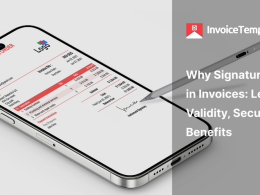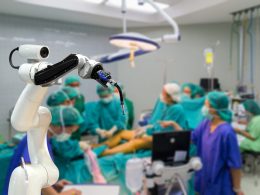In recent years, Intelligent Transportation Systems (ITS) have become a cornerstone of modern transportation infrastructure. These advanced communication technologies have significantly enhanced the safety, mobility, and productivity of transportation networks. ITS integrates advanced technologies into vehicles and infrastructure, paving the way for a smarter, safer, and more efficient transportation system.
Understanding Intelligent Transportation Systems (ITS)

Intelligent Transportation Systems (ITS) involve the integration of communication technologies into transportation systems to improve safety and efficiency. By using sensors, wireless communication, and data analytics, ITS facilitates real-time information sharing among vehicles, infrastructure, and traffic management centers. The core objective of ITS is to improve transportation safety and mobility while enhancing productivity. In this context, let’s examine the benefits of ITS and how it is making a difference in our daily lives.
Enhanced Safety and Reduced Accidents
ITS technologies play a vital role in improving road safety. By enabling real-time communication and data exchange, they help in preventing accidents and managing traffic more effectively. For example, automated speed enforcement systems in Chicago neighborhoods have reduced speeding by 65%, highlighting the effectiveness of ITS in reducing traffic violations. Additionally, speed management systems used in winter maintenance have achieved a 100% reduction in winter-weather-related accidents in areas like Snowmass Canyon, Colorado.
Improved Mobility and Reduced Congestion
Mobility improvements are among the primary goals of ITS technologies. These systems coordinate human service transportation, optimize traffic signals, and deploy real-time navigation solutions to reduce congestion. Case studies in South Carolina and North Carolina revealed that coordinated human services transportation can increase passengers per revenue hour by 10%, improving both mobility and operational efficiency.
Environmental Benefits through Reduced Emissions
ITS technologies contribute significantly to environmental sustainability by reducing fuel consumption and emissions. For instance, the AERIS (Applications for the Environment: Real-Time Information Synthesis) program’s eco-approach technology optimizes vehicle speeds, allowing drivers to maintain green signals or decelerate in an eco-friendly manner. This results in 5% to 10% fuel savings when fully deployed, supporting eco-friendly driving practices.
The Real-World Examples
Chicago implemented automated speed enforcement systems in four neighborhoods around parks and schools to address chronic speeding issues. In the initial phase, nine cameras were deployed, capturing a daily average of 507 vehicles exceeding the speed limit by 10 mph or more. Within three weeks of enforcement, the number of speeding vehicles dropped to 175, representing a 65% reduction. This example highlights the significant impact of ITS in urban areas, enhancing safety for pedestrians, cyclists, and drivers.
Coordinated Human Service Transportation in Rural Areas
A study conducted by the USDOT focused on improving human service transportation in rural areas, particularly in North and South Carolina. The simulation revealed that full coordination among paratransit service providers led to a 10% to 13% improvement in operating efficiency in South Carolina, while North Carolina observed a 7% to 9% increase. This successful deployment of ITS showcases how better coordination can enhance service delivery for the transportation disadvantaged, including the elderly, people with disabilities, and low-income individuals.
Speed Management Systems for Winter Maintenance in Colorado

The topography of Colorado State Highway 82 often results in winter-weather-related accidents due to shading and precipitation build-up on certain road segments. To tackle this issue, a speed management system was implemented, resulting in zero accidents during the first winter of operation. This 100% reduction in accidents emphasizes the importance of ITS in improving road safety under challenging weather conditions.
Integrated Corridor Management (ICM) in Major Urban Areas
The USDOT partnered with eight transportation agencies in major urban areas to implement Integrated Corridor Management (ICM) strategies. ICM approaches involve managing travel corridors as a system, rather than individual assets, to improve travel reliability and reduce congestion. The ICM Implementation Guide developed as a result of this initiative provides strategies to manage congestion, emphasizing the need for teamwork among regional communities.
Photo-Radar Speed Enforcement
Photo-radar speed enforcement is a common ITS deployment in work zones and urban areas. For instance, a study conducted on US 30 in Northeast Portland showed a 23.7% reduction in speeding during the deployment of photo-radar enforcement vans. Although the reduction did not persist after the van was removed, the study demonstrates the effectiveness of ITS in managing traffic speed temporarily.
Connected Vehicle Technology
Connected vehicle technology is an essential component of ITS, enabling real-time communication between vehicles and infrastructure. This technology supports applications like eco-approach and departure, crash avoidance, and intersection safety. With full deployment, connected vehicle systems can lead to significant fuel savings, improved traffic flow, and reduced emissions.
Traffic Incident Management
Traffic incident management (TIM) is another ITS strategy aimed at reducing the duration and impact of traffic incidents. Effective TIM involves real-time communication among emergency responders, traffic operators, and public information systems. This strategy helps in faster incident clearance, reduced secondary crashes, and minimized congestion, thereby improving overall transportation efficiency.
How ITS Enhances Quality of Life

Intelligent Transportation Systems (ITS) offer a range of benefits that go beyond improving transportation infrastructure—they also contribute directly to enhancing the quality of life in communities. By making roads safer, easing traffic congestion, and encouraging environmentally friendly driving habits, ITS plays a crucial role in building more livable, sustainable communities.
Challenges and Lessons Learned
The implementation of Intelligent Transportation Systems (ITS) has brought about numerous benefits, including enhanced safety, reduced congestion, and environmental improvements. However, the deployment of ITS technologies is not without its challenges. These obstacles need to be addressed for the systems to be successfully integrated and sustained in the long run. Here’s a closer look at some of the key challenges and the lessons learned through ITS implementation:
High Initial Costs:
One of the most significant hurdles in adopting ITS is the high upfront cost of installation. Deploying advanced technologies such as smart traffic lights, sensors, cameras, and vehicle-to-infrastructure communication systems requires substantial financial investments. For smaller municipalities or regions with limited budgets, this can be a major barrier.
Complex Integration:
The successful deployment of ITS often involves the coordination of numerous stakeholders, including government agencies, private companies, infrastructure providers, and the academic community. These entities need to collaborate effectively to ensure the system functions seamlessly.
Conclusion
Intelligent Transportation Systems (ITS) are transforming the way we travel, offering tangible benefits such as enhanced safety, reduced congestion, increased efficiency, and improved environmental outcomes. Through real-world examples like automated speed enforcement in Chicago, coordinated human services transportation in rural areas, and eco-approach technology in California, the potential of ITS becomes evident.










